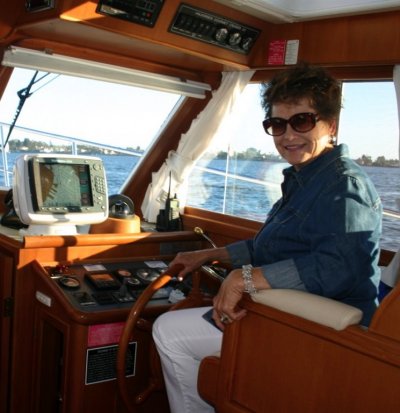Tom.B
Moderator Emeritus
- Joined
- Jul 30, 2009
- Messages
- 5,839
- Location
- USA
- Vessel Name
- Skinny Dippin'
- Vessel Make
- Navigator 4200 Classic
I'm curious, how hard is it to keep your boat going on a straight course? When I first bought our 35' Senator (single screw) she handled ok. It wasn't really good or bad at keeping on a straight heading but was rubbish at slow speeds. After a little snooping, I decided to have the rudder extended by 4" aft and 1" fore (that was the exact same ratio as the current measurments of the stock rudder). It was actually a little more than I had originally wanted, but I was limited by the size of the size of the metal stock at the yard.
Anyway, my point is that while the slower speed handling is better, the cruising speed handling (7-7.5 knots) SEEMS worse. It's quite a task to keep her going straight ahead for any lenth of time. I tend to wander her back and forth some (and when the First Mate takes the helm... fugettaboutit) I* worry about it whenever others follow us and they might be laughing at my inability to keep her in the ditch. It takes a bit of Zen to get her to a hands-off helm position... even for a short time.
Are other Taiwanese trawlers like this? Was it like this prior and I was just too new to feel it? I wonder if the forward edge of the rudder is too close to the screw now? It's not close enough to hit, but I am not an expert on fluid dyanmics to know. DUH!
Opinions? I'd hate to think I really botched it, but I see some trawlers with HUGE rudders and I thought, of course, that bigger is better.
Anyway, my point is that while the slower speed handling is better, the cruising speed handling (7-7.5 knots) SEEMS worse. It's quite a task to keep her going straight ahead for any lenth of time. I tend to wander her back and forth some (and when the First Mate takes the helm... fugettaboutit) I* worry about it whenever others follow us and they might be laughing at my inability to keep her in the ditch. It takes a bit of Zen to get her to a hands-off helm position... even for a short time.
Are other Taiwanese trawlers like this? Was it like this prior and I was just too new to feel it? I wonder if the forward edge of the rudder is too close to the screw now? It's not close enough to hit, but I am not an expert on fluid dyanmics to know. DUH!
Opinions? I'd hate to think I really botched it, but I see some trawlers with HUGE rudders and I thought, of course, that bigger is better.

